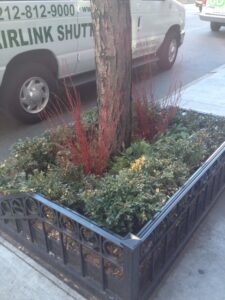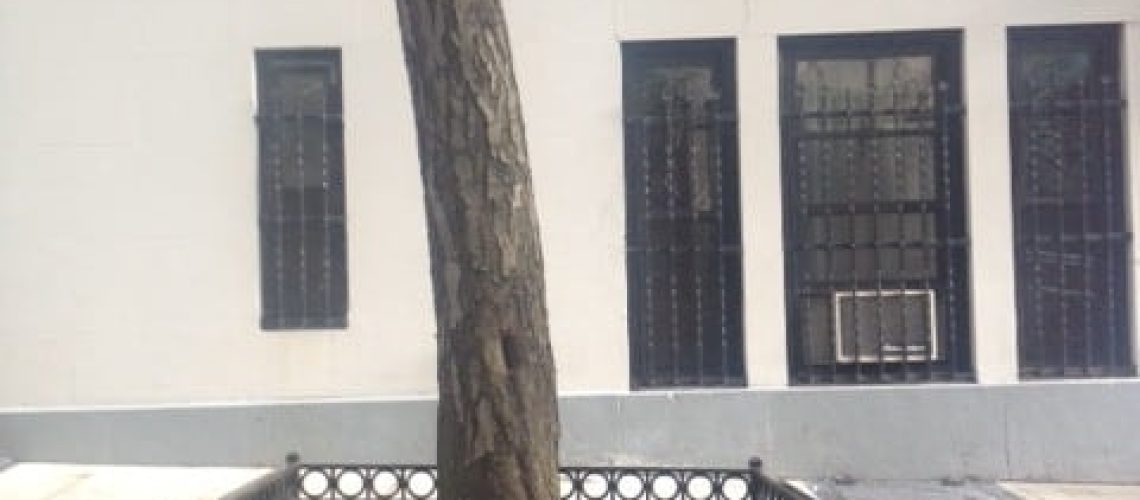As you stroll around your neighborhood during these warm summer days, you’ll probably spot an array of tree guard styles. Some are wrought iron, some are wood; Many have elaborate designs, while others are as simple as a box. Variety is a great thing but, before you consider investing in anything to protect street trees, be aware: Not all tree guards are created equal. In fact, many of the guards used throughout cities actually harm the trees they are designed to protect. Here’s some examples of which tree pits are the pits.
1. Bed of Bricks: Using cobblestones to raise the tree pit above ground limits the amount of rainwater entering the pit, especially when they are cemented together. (Also note that this guard was obviously hit and clearly didn’t have breakaway brackets. See how the entire frame is tilted?)

2. Looks Beautiful, But…again, don’t raise the blocks. Those blocks are also a tripping hazard.

3. Thirsty Tree. Wooden planters do not just limit water supply, but prevent water from entering the sides of the pit at all. Also, raising the soil above ground (as is the case here with a wooden planter or above via cobblestones) suffocates the tree.

4. Help! I’m Trapped in Cement! To grow big and strong, these trees need lots of water and oxygen. That’s why city parks departments are making tree pits larger. Never trap your tree in a tiny space like in this picture below.

5. Don’t Give Me Any Lip. Up until recently, this type of guard was allowed in New York City. Not anymore. Just like with the cobblestone border or wooden planter, the solid border on the base of this custom-made tree guard (i.e. the lip) raises soil above ground, denying the tree of oxygen and water.

6. Not A Garbage Can. To borrow liberally from Abraham Lincoln, I hold the problem here to be self evident. Don’t build around a tree trunk that can be mistaken for a trash can! Rotting garbage smells and will damage the bark.

7. Ack! I’m Choking! Grates and cages like this in San Francisco girdle (or choke) the tree. In addition, the debris that gets trapped inside the cage rots the bark.

8. Cool Sign, But…Do you have to pin this to the tree’s trunk? Not a good idea. Pins and tape damage the trees bark. Consider laminating your sign and attaching a wooden stake, and sticking it into ground in your tree pit (like the sign below).


By avoiding these tree guard no-nos, you can be sure that your street trees will be safe no matter where you get your guards. Thanks again for looking out for our trees!
Contact us for:
